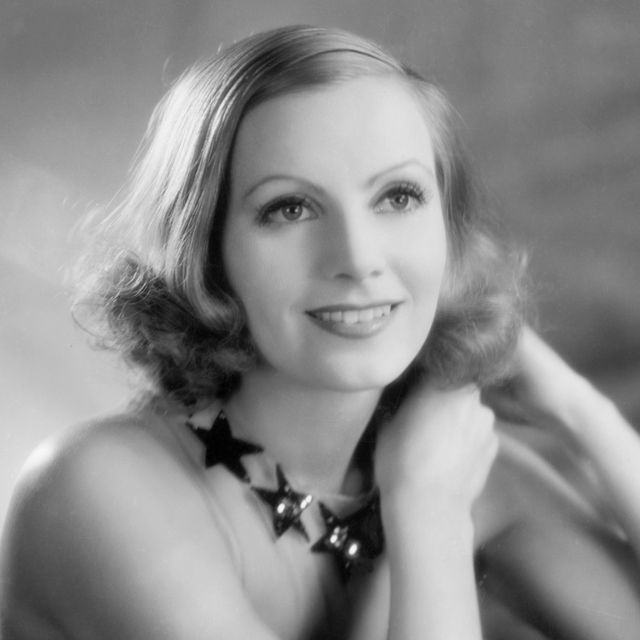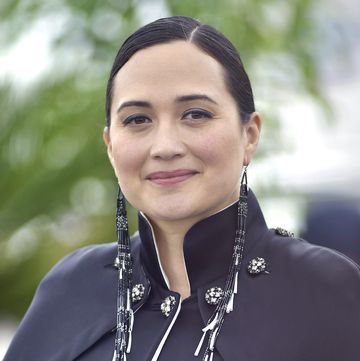(1905-1990)
Who Was Greta Garbo?
Greta Garbo was born on September 18, 1905, in Stockholm, Sweden. A reclusive star, Garbo began her career in Europe before coming to the United States to work for MGM when she was 19. Her sensual, mysterious look made her a hit with American audiences, both in silent and sound films before World War II, and she was nominated for four Oscars, later winning an honorary award. She died in New York City on April 15, 1990.
Early Years
One of Hollywood's most enigmatic stars, Greta Garbo was born Greta Lovisa Gustafson on September 18, 1905, in Stockholm, Sweden. To her parents, Karl and Anna, who already had two children, Greta came as a surprise arrival, further straining the family's already tight finances.
Greta's father was an unskilled laborer who was often out of work and in poor health, which forced his family to live with the constant threat of poverty.
At the age of 13, Greta dropped out of school to care for her father, who had fallen deeply ill. He died two years later of kidney failure. The strain her father's health and subsequent death left on the family deeply affected young Greta, who promised to make a life for herself that was void of financial hardship.
Modeling and First Films
Following her father's death, Greta landed job as a salesperson at a Swedish department store. To help promote the men's clothing line, Greta starred in a pair of advertising shorts, modeling the attire. Her natural instincts in front of the camera soon led her to a role in her first film, a comedy called Peter the Tramp (1922).
A bigger opportunity followed when Greta earned a scholarship at the prestigious Royal Dramatic Theater, Sweden's premier school for aspiring actors. But Greta cut her education short after just a year after meeting director Mauritz Stiller, Sweden's leading silent film director, who wanted the young actress to star in his new film, The Legend of Gosta Berling (1924).
The film's success in both Sweden and Germany made Garbo famous. It also solidified a partnership with Stiller that would change her career and life. Stiller coached her as an actress and convinced her to change her last name to Garbo.
Garbo's next film, Streets of Sorrow (1925), in which she played a prospective prostitute, furthered Garbo's standing as a star in Europe. The film also caught the attention of Metro-Goldwyn-Mayer (MGM) production chief Louis B. Mayer. Mayer wanted Stiller, who worked on the film, to work in America. The flamboyant director agreed to a contract with one condition: Garbo was to come with him. Reluctantly, Mayer inked her to a deal, too.
Career in America
The 19-year-old Garbo arrived in America in 1925. Her arrival had come quietly and from the start, she showed a reluctance to deal with the press or reveal anything about her private life. During her first interview, she curtly told reporters, "I was born. I had a mother and father. I went to school. What does it matter?"
Garbo's first American film, The Torrent (1926), cast her as a Spanish peasant who is desperate to become an opera star. But the planned Garbo-Stiller partnership in Hollywood never materialized. Stiller wasn't hired to direct The Torrent, and after a subsequent blow-up with MGM executives he bolted for Paramount, where he again encountered problems with his bosses. He returned to Sweden in 1928 and died a year later.
Garbo, however, proved to be an immediate hit. Her next two films, The Temptress (1926) and Flesh and the Devil (1926), were both successful and made the actress an international star.
Trailblazing Film Icon
For MGM, Garbo was the studio's biggest asset. Her first three films amounted to 13 percent of the company's profits from 1925-26. Garbo, ever mindful of the financial difficulties she'd grown up with, knew she had leverage. After a contract dispute with MGM, Garbo, who'd threatened to return to Sweden, landed a new contract that paid her a record $270,000 per movie and gave her unprecedented control over her roles and the films she starred in.
In many ways Garbo represented a new kind of Hollywood actress, one whose vulnerabilities, sexuality, passion and mystery swirled together to entice both male and female audiences. Additionally, her style changed the course of American fashion, while her reclusive nature (she gave her last American interview in 1927) only fueled the public's fascination with her.
The Advent of Sound
The advent of sound presented a predicament for MGM. The future of films was clear, but there was real hesitancy to let audiences hear Garbo speak. Executives worried her star power would be diminished by her accent and low, throaty voice.
MGM finally relented and in 1930, Garbo made her debut in sound in a movie adaption of Eugene O'Neill's Anna Christie. She followed that same year with Romance, and earned Academy Award nominations for both features. Despite MGM's concerns, Garbo's star did not fade: In 1931, she teamed up with Clark Gable in Susan Lenox: Her Fall and Rise, and in 1932, she co-starred with Melvyn Douglas in As You Desire Me. That same year, she was part of an all-star cast that included John and Lionel Barrymore, Joan Crawford and Wallace Beery in Grand Hotel, which won the Academy Award for Best Picture.
Academy Award Nods
In 1933, Garbo took on one of her most ambitious roles as a fictional Swedish monarch in Queen Christina. Other films followed, such as Anna Karenina (1935), Camille (1936, for which she earned her third Oscar nod) and Conquest (1937).
In the late 1930s, however, Garbo's box office appeal began to diminish. With America in the midst of the Depression, the actress' cosmopolitan style didn't resonate with audiences like it once had. In an effort to remake herself, Garbo was cast in a pair of comedies, Ninotchka (1939) and Two-Faced Woman (1941), neither of which matched her previous successes, though she did receive her final Oscar nomination for the former. After another contract dispute with MGM, she retired from acting. Garbo later received a special Academy Award in 1955 honoring the entirety of her career.
Reclusive Years and Death
Away from the glare of Hollywood, Garbo retreated to a private world that few were allowed to glimpse. While she had several romantic partners, including at least one woman, she never married.
During World War II, while much of Hollywood rallied the country around the war effort, Garbo generated criticism by remaining largely silent. On the advice of a friend, she invested heavily in real estate and art. At the time of her death, she was estimated to be worth more than $55 million.
Eventually Garbo left California and settled into a new life in New York City, where she loved to window shop. Periodic Greta Garbo spottings were reported like UFO sightings. Her friends during this last period of her life included the English photographer Cecil Beaton and ventriloquist and fellow Swede, Edgar Bergen.
In the late 1980s, Garbo's kidneys began to fail, forcing her to stop her walks and further isolating her from the outside world. She died on April 15, 1990, at a New York City hospital.
In 2012, some of Garbo's possessions, including clothing, jewelry and her bed, were sold at auction. Five years later, it was announced that a collection of the movie star's letters would also go up for sale at Sotheby's in London. The 36 letters, written in the 1930s and '40s, described her loneliness in Hollywood, as well as her displeasure over changes made to the plot of The Two-Faced Woman, her final screen role.
QUICK FACTS
- Name: Greta Garbo
- Birth Year: 1905
- Birth date: September 18, 1905
- Birth City: Stockholm
- Birth Country: Sweden
- Gender: Female
- Best Known For: Swedish actress Greta Garbo is best known for her career in both silent and talking films before World War II.
- Industries
- Film
- Astrological Sign: Virgo
- Schools
- Royal Dramatic Theater
- Nacionalities
- Swedish
- Death Year: 1990
- Death date: April 15, 1990
- Death State: New York
- Death City: New York
- Death Country: United States
Fact Check
We strive for accuracy and fairness.If you see something that doesn't look right,contact us!
CITATION INFORMATION
- Article Title: Greta Garbo Biography
- Author: Biography.com Editors
- Website Name: The Biography.com website
- Url: https://www.biography.com/actors/greta-garbo
- Access Date:
- Publisher: A&E; Television Networks
- Last Updated: September 12, 2022
- Original Published Date: April 2, 2014
QUOTES
- I was born. I had a mother and father. I went to school. What does it matter?
- Anyone who has a continuous smile on his face conceals a toughness that is almost frightening.












